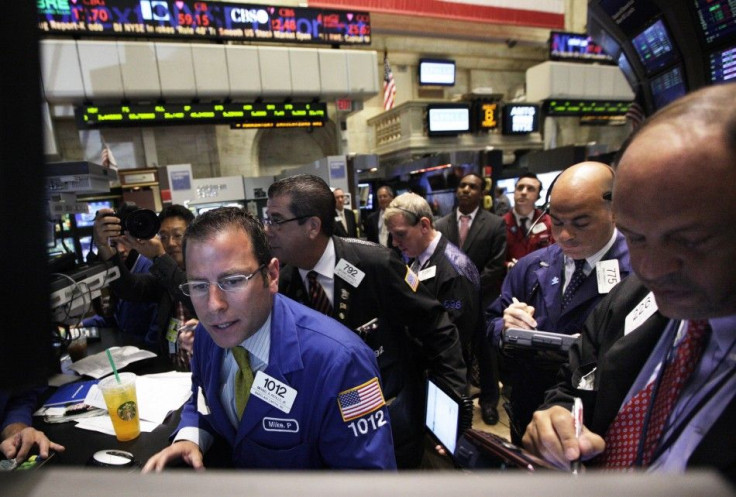Wall Street Plunges After S&P's U.S. Debt Downgrade

U.S. stocks plummeted for the second straight session, driving the S&P 500 and the Nasdaq down 6 percent on Monday in the first session since Standard & Poor's cut the nation's perfect AAA credit rating.
The downgrade -- the first in the country's history -- reflected investors' rising fear about the economic outlook and Washington's ability to meet the challenges.
The CBOE Volatility Index, Wall Street's "fear gauge," jumped 45 percent to an intraday peak at 46.90, in the VIX's first leap above 40 since May 2010.
Monday's huge sell-off extended the losses in the previous week, which was Wall Street's worst in more than two years.
The S&P 500 is down 17 percent from its 2011 closing high, reached on April 29 -- putting the benchmark index close to the 20 percent decline from a recent peak that Wall Street defines as bear market territory.
"This is compounding the concerns we already had about Europe and the pace of economic growth," said John Carey, portfolio manager at Pioneer Investment Management in Boston, which has about $260 billion in assets under management.
"People are asking, 'Can the economy still grow in the face of all this?'"
The Dow Jones industrial average sank 525.78 points, or 4.59 percent, to 10,918.83. The Standard & Poor's 500 Index dropped 70.30 points, or 5.86 percent, to 1,129.08. The Nasdaq Composite Index lost 149.66 points, or 5.91 percent, to 2,382.75.
Reflecting the extent of fear and the selling. about 98 percent of the issues traded on the New York Stock Exchange were in negative territory. Decliners outnumbered advances on the NYSE by nearly 60 to 1. On the Nasdaq, about 92 percent of the stocks traded were in the red. Nearly 15 Nasdaq stocks fell for every one that rose.
While all 10 S&P sectors fell more than 2 percent, the groups most sensitive to the economy, such as banking and commodities, were the hardest hit. The S&P financial index lost 8.3 percent while the S&P energy index lost shed 6.9 percent. U.S. crude oil futures slid 6.1 percent, or $5.31, to $81.57 a barrel.
Late on Friday after the market's close, S&P cut the U.S.'s pristine long-term credit rating of AAA by one notch to AA-plus on concerns about debt levels in the world's largest economy. The downgrade could eventually raise borrowing costs for the U.S. government and companies, as well as for consumers.
Bank of America Corp. shares plummeted 18 percent to $6.71, after hitting a fresh 52-week low at $6.31. The banking company's stock the most actively traded name on the New York Stock Exchange and one of the S&P 500's biggest losers.
United States Steel Corp. slid 12.3 percent to $29.10.
Only one of the S&P 500's components -- Newmont Mining-- was in positive territory, while gold, seen as a safe haven, rallied to above $1,700 an ounce. Newmont Mining's stock was up 0.8 percent at $54.82.
Even the European Central Bank's dramatic intervention in bond markets, which pushed down yields on Spanish and Italian bonds, wasn't enough to stem selling.
In company news, Verizon Communications Inc. fell 4.2 percent to $33.57 a day after nearly half of its wireline business employees went on strike. The drop in the Dow component's stock wasn't as steep as the broader market's decline because telecom is viewed as a defensive sector.
© Copyright Thomson Reuters 2024. All rights reserved.



















